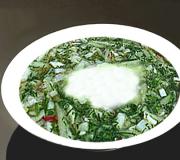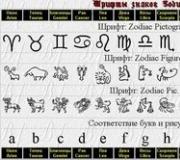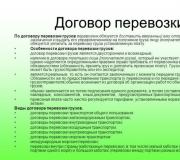History of the development of computer technology - manual stage - abacus. History of the development of computer technology - manual stage - abacus Abacus from time immemorial 4 letters
Is it possible to imagine a world without numbers? Remember what you and I do every day: without numbers you can’t make a purchase, you can’t find out the time, you can’t dial a phone number. And spaceships, lasers and all other achievements! They would simply be impossible if it were not for the science of numbers. When answering the question “how much?”, we almost always name one number or another. Number is one of the basic concepts of mathematics, allowing one to express the results of counting or measurement.
In past times there were many ways of counting. The art of counting has evolved with the development of humanity. In those days, when a person only collected fruits in the forest and hunted, he only needed his hand to count. Our fingers are always with us.
The human hand is the first “calculating machine”. The boy drove out the herd, bent his fingers, and when he drove the goats, he again counted them on his fingers and compared whether he had bent all his fingers. Fingers were the first conventional symbols for designating numbers. This is how the idea of using fingers to represent numbers was born. When the fingers on one hand ran out, they moved to the other, and if there weren’t enough on both hands, they moved to their feet. Therefore, if in those days someone boasted that he had “two arms and one leg of chickens,” this meant that he had fifteen chickens, and if it was called “the whole man,” that is, two arms and two legs, this meant twenty.
When many animals took part in the counting, the fingers ran out, and the question arose of how to designate the tens. Then they turned to nicks and pebbles.
In ancient times, when a person wanted to show how many animals he owned, he would put as many pebbles in a large bag as the number of animals he owned. The more animals, the more pebbles. This is where the word “calculator” comes from, “calculus” means “stone” in Latin!
With the development of man, trade arose and merchants appeared. In order to count how many goods he purchased, it became necessary to perform operations with numbers. For example, count the number of bags of cereal and flour. To do this, they began to use two grooves in the sand and a bag of pebbles. The right column represents units, and the left column represents tens. Place five pebbles in the right groove. Each of them represents one bag of cereal. And put four pebbles in the left groove. Each will represent a dozen bags. The pebbles in both grooves will show that you have 4 dozen and 5 more bags - a total of 45. You indicated the number of grains purchased by the merchant at the market. To add 43 bags of flour, add three pebbles to the right groove and four to the tens groove. By counting the pebbles in the grooves, the answer is that the merchant bought 88 bags in total.
While counting the goats, the shepherdess, having counted all the fingers on her hands, put one pebble aside, and then continued counting from hand to hand. With every ten, she put aside a pebble, when the herd came out of the pen, there were 4 pebbles lying on the ground and eight fingers turned out to be bent. Thus, she put 48 goats out to pasture.
When Robinson Crusoe in the book by the writer Defoe remained on a desert island, he kept a kind of calendar. To do this, he made a short notch on a post dug into the ground every day, and every 30 days he made a longer notch. This is how Robinson counted the days and months spent on the island.
In Russia, the expression has been preserved: “Cut it on your nose.” It says that in order to remember something important, you should make a note. The word “nose” in this case is derived from the word “to wear.” In the old days, many people carried small sticks with them for notching. They called them “nose”, and in order to remember the required number, they made the corresponding number of notches on the “nose” - marks.
Serifs on sticks were used in trade transactions. After completing the payments, the sticks were broken in half, one half was taken by the creditor, and the other by the debtor. The half played the role of a “receipt”.
The Peruvian Incas kept track of animals and crops by tying knots on straps or laces of varying lengths and colors. These bundles were called kipu. Some rich people accumulated several meters of this rope “counting book”, try it, remember in a year what 4 knots on a string mean! Therefore, the one who tied the knots was called a rememberer
Rope abacus with knots were in use in Russia, as well as in many European countries. People still sometimes tie knots on handkerchiefs as a keepsake.
Figures of ancient civilizations
Numbering of the ancient Sumerians
The ancient Sumerians were the first to come up with the idea of writing numbers. They only used two numbers. A vertical line denoted one unit, and an angle of two recumbent lines denoted ten. They made these lines in the form of wedges, because they wrote with a sharp stick on damp clay tablets, which were then dried and fired.
What was the Mayan number system?
The ancient Mayan people, instead of the numbers themselves, drew scary heads, like those of aliens, and it was very difficult to distinguish one head - a number - from another.
At the beginning of our era, the Mayan Indians, who lived on the Yucatan Peninsula in Central America, used a different number system - base-20. They denoted 1 with a dot, and 5 with a horizontal line, for example, the entry == meant 14. The Mayan number system also had a sign for zero. In its shape it resembled a half-closed eye.
It is interesting that different peoples living in countries distant from each other and at different times invented their own methods for writing numbers, but still somewhat similar to other ways of writing numbers.
What were the Egyptian numbers like?
The Egyptians wrote in hieroglyphs, that is, they used drawings to represent an idea or object. These drawings depicted elements of the flora and fauna of the Nile River and household utensils. They also wrote numbers in hieroglyphs. The Egyptians had signs to represent numbers from 1 to 10.
In ancient Egyptian numbering, which originated more than 5,000 years ago, there were special characters for writing the numbers 1, 10, 100, 1000, ... and a special hieroglyph for tens, hundreds of thousands, tens of thousands, hundreds of thousands, millions and tens of millions. At that time, only specially trained people could write and count; for ordinary people, counting was just as inaccessible as writing. This system was used in Ancient Egypt for trade and tax collection, especially widespread during the construction of the Great Pyramids, and gradually died out along with the caste of builders and accountants during the decline of Egypt.
In order to depict, for example, the integer 23145, it is enough to write in a row two hieroglyphs representing ten thousand, then three hieroglyphs for a thousand, one for a hundred, four for ten and five hieroglyphs for one: .
Babylonian wedges
The Babylonian peoples used only two cuneiform signs - a straight wedge and a lying wedge. These peoples used a sexagesimal number system, for example the number 23 was depicted like this: The number 60 was again indicated by a sign, for example the number 92 was written like this:
Ancient Greece and Rus'
The ancestors of the Russian people - the Slavs - used letters to designate numbers. Above the letters used to designate numbers, special signs were placed - titla. To separate such letters - numbers from the text, dots were placed in front and behind. This method of designating numbers is called tsifir. It was borrowed by the Slavs from the medieval Greeks - the Byzantines. Therefore, numbers were designated only by those letters for which there are correspondences in the Greek alphabet.
ancient abacus
Alternative descriptionsBoard for arithmetic calculations in Ancient Greece, Rome, then in Western Europe until the 18th century.
Architectural detail: slab above column
Upper part of a column capital
A board that was used in ancient times for arithmetic calculations
Computer of the ancient world
Ancient counting board
Prehistoric computer
Accounts of ancient accountants
Antique abacus
Pythagorean calculator
Greek abacus
Ancient counting board
The first article of the “Mathematical Encyclopedic Dictionary” is devoted to this subject.
Ancient abacus with quinary number system
The history of the computer begins with this calculating device
Antique computer
In architecture, the top of a column capital
Pilaster top plate
Arithmetic board in Ancient Greece
Stone Age calculator
Abacus of the Hellenes
Abacus from Ancient Greece
Counting board
Part of a column capital
Great-great-grandfather of the computer
Archimedes' abacus
Ancient "arithmometer"
Ancestor of the calculator
Upper part of the capital
Antediluvian abacus
Accountants' Knuckles
Ancient mathematicians board
Board with pebbles
Greek "board"
Hellenic counting board
Top of the column
Slab on top of capital
Ancient "calculator"
Slab over column
The most ancient abacus
Greek ancestor of the calculator
Antique counting board
Ancient Greek pebbles that love counting
Pythagorean times calculator
Ancient counting board
Ancestor of stationery accounts
Top of the capital
In Rus' there is an abacus, but in Greece?
Antediluvian abacus of the ancient Greeks
Abacus for Pythagorean calculations
Computer from the time of Daedalus and Icarus
Analogue of accounts among the ancient Greeks
The oldest abacus
Forefather of the computer
Prototype of accounts
Abacus from the times of Pythagoras
Distant ancestor of the calculator
Antique "calculator"
Accounts from the times of Daedalus and Icarus
Abacus of ancient times
An ancient calculating device
Ancient counting board
Archaic counting board
Accounts of our ancestors
Old abacus
. Archimedes' "arithmometer"
Vintage abacus
Ancient Greek abacus
The counting board of the ancient Romans
Ancient abacus
Upper plate of column capital, pilasters
Pythagorean calculator
Ancient abacus
Alternative descriptionsBoard for arithmetic calculations in Ancient Greece, Rome, then in Western Europe until the 18th century.
Architectural detail: slab above column
Upper part of a column capital
A board that was used in ancient times for arithmetic calculations
Computer of the ancient world
Ancient counting board
Prehistoric computer
Accounts of ancient accountants
Antique abacus
Pythagorean calculator
Greek abacus
Ancient counting board
The first article of the “Mathematical Encyclopedic Dictionary” is devoted to this subject.
Ancient abacus with quinary number system
The history of the computer begins with this calculating device
Antique computer
In architecture, the top of a column capital
Pilaster top plate
Arithmetic board in Ancient Greece
Stone Age calculator
Abacus of the Hellenes
Abacus from Ancient Greece
Counting board
Part of a column capital
Ancient abacus
Great-great-grandfather of the computer
Archimedes' abacus
Ancient "arithmometer"
Ancestor of the calculator
Upper part of the capital
Antediluvian abacus
Accountants' Knuckles
Ancient mathematicians board
Board with pebbles
Greek "board"
Hellenic counting board
Top of the column
Slab on top of capital
Ancient "calculator"
Slab over column
The most ancient abacus
Greek ancestor of the calculator
Antique counting board
Ancient Greek pebbles that love counting
Pythagorean times calculator
Ancient counting board
Ancestor of stationery accounts
Top of the capital
In Rus' there is an abacus, but in Greece?
Antediluvian abacus of the ancient Greeks
Abacus for Pythagorean calculations
Computer from the time of Daedalus and Icarus
Analogue of accounts among the ancient Greeks
The oldest abacus
Forefather of the computer
Prototype of accounts
Abacus from the times of Pythagoras
Distant ancestor of the calculator
Antique "calculator"
Accounts from the times of Daedalus and Icarus
Abacus of ancient times
An ancient calculating device
Ancient counting board
Archaic counting board
Accounts of our ancestors
Old abacus
. Archimedes' "arithmometer"
Vintage abacus
Ancient Greek abacus
The counting board of the ancient Romans
Upper plate of column capital, pilasters
Pythagorean calculator
Download video and cut mp3 - we make it easy!
Our website is a great tool for entertainment and relaxation! You can always view and download online videos, funny videos, hidden camera videos, feature films, documentaries, amateur and home videos, music videos, videos about football, sports, accidents and disasters, humor, music, cartoons, anime, TV series and many other videos are completely free and without registration. Convert this video to mp3 and other formats: mp3, aac, m4a, ogg, wma, mp4, 3gp, avi, flv, mpg and wmv. Online Radio is a selection of radio stations by country, style and quality. Online Jokes are popular jokes to choose from by style. Cutting mp3 into ringtones online. Video converter to mp3 and other formats. Online Television - these are popular TV channels to choose from. TV channels are broadcast absolutely free in real time - broadcast online.




